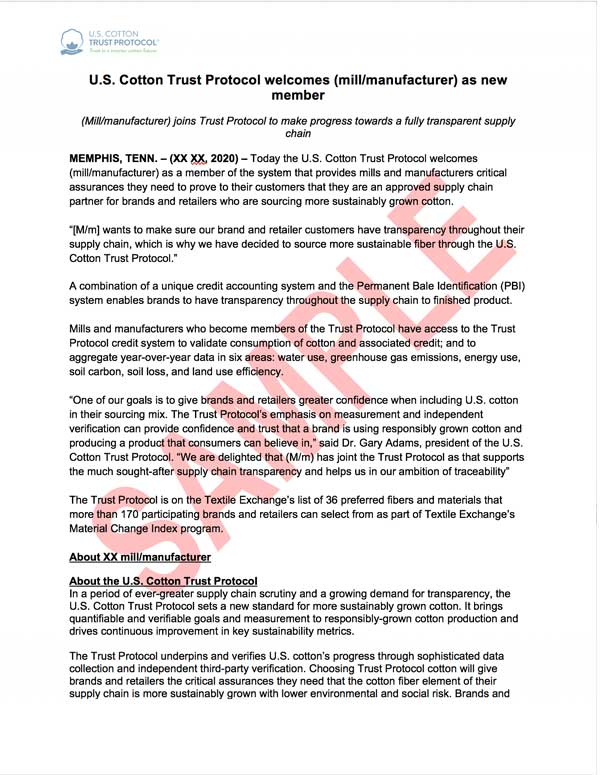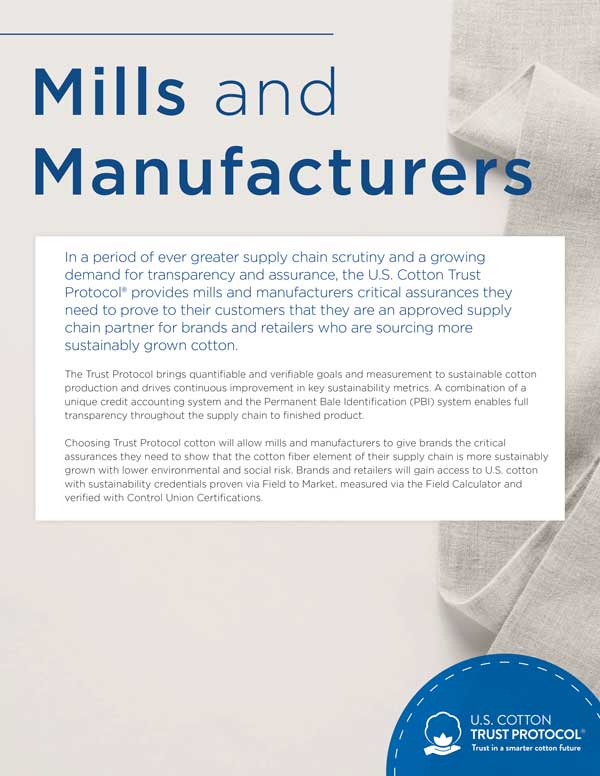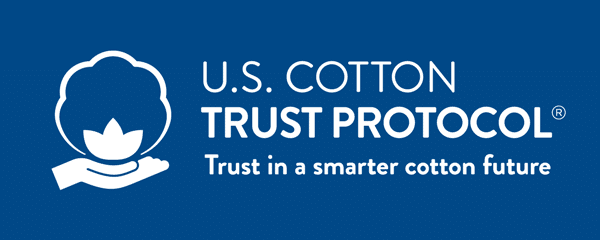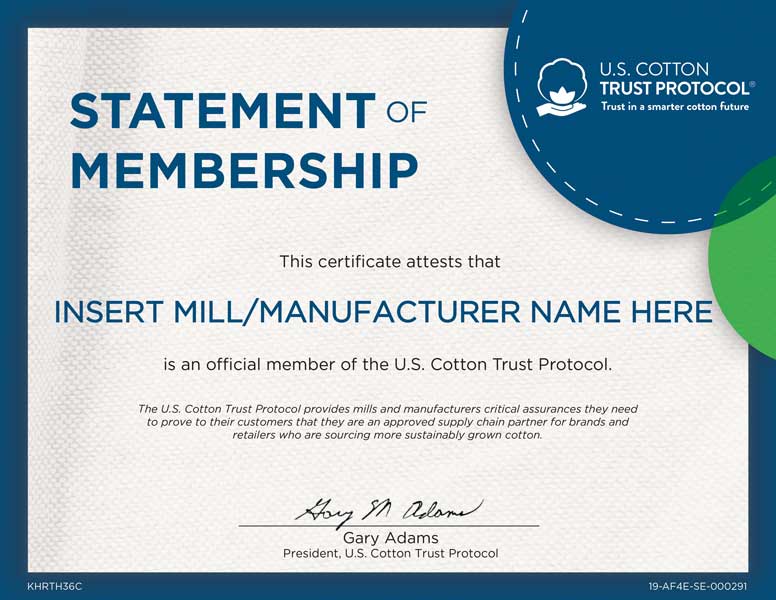Mills and Manufacturers' Packet
Congratulations! You are now a member of the U.S. Cotton Trust Protocol™.
The resources below are provided for use in publicizing your membership and as reference materials of the Trust Protocol. Should you need another format of the below materials, please email members@trustuscotton.org.
Trust in a smarter cotton future.

New Member Press Release Template
Over the next 35 years, our goal is to reduce soil loss, water usage, and GHG while increasing land use efficiency and soil carbon.

The U.S. Cotton Trust Protocol® Brand Guidelines
2025 U.S. national goals are to reduce soil loss, water usage, and GHG while increasing land use efficiency and soil carbon.

Mills and Manufacturers Proposition
In a period of ever greater supply chain scrutiny and a growing demand for transparency and traceability, The U.S. Cotton Trust Protocol® sets a new standard for more sustainably grown cotton.

The U.S. Cotton Trust Protocol® Cotton Principles and Criteria
The U.S. Cotton Trust Protocol® is part of a wider landscape of sustainable cotton and textile conversations. To help our audience understand how the Trust Protocol fits in to the broader context, we have launched our own monthly podcast series.

The U.S. Cotton Trust Protocol® Full Color Logo
Over the next 35 years, our goal is to reduce soil loss, water usage, and GHG while increasing land use efficiency and soil carbon.

The U.S. Cotton Trust Protocol® White Color Logo
2025 U.S. national goals are to reduce soil loss, water usage, and GHG while increasing land use efficiency and soil carbon.

The U.S. Cotton Trust Protocol® Membership-Certificate
You can’t improve what you don’t measure! The U.S. Cotton Trust Protocol® tracks and measures the sustainability efforts and practices of U.S. cotton growers so that growers can learn more and continuously improve. The Protocol is proud to provide data to support progress towards sustainability goals.

New Member Press Release Template
Over the next 35 years, our goal is to reduce soil loss, water usage, and GHG while increasing land use efficiency and soil carbon.
